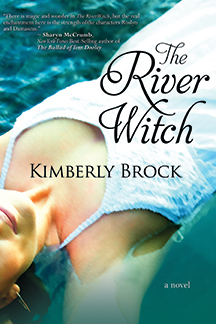Yesterday was Part 4 - Place. Today tosses around the use of narrative color. Remember. . . this is not an I'm-Southern-and-you're-not post. It's more of how to pay attention to locale, culture and voice to pull off your story's geographic specialty.
Write narrative as colorful as dialogue.
You're in someone's head all the time, whether you're writing third or first person, which are the two most common choices for genre fiction. The story is still smoking, moving along, told or enacted by someone. Why not let Southern color weave its way into the moments between people talking? You don't need dialogue to make the story sound geographically or culturally connected.
Colorful narrative is stroked and woven into the story, as if we heard it seated around a rocking chair, listening to grandmomma telling it.
First person is easier, in my opinion, but I adore writing in this point of view. I enjoy becoming the character, to such a point that I feel I'm writing a memoir in lieu of fiction. So dialogue continues in the character's head. We think like we speak, most of the time, so don't forget to let that wit, sarcasm, humor, and caustic attitude shine even when the character isn't speaking. Take this moment in Carolina Slade's office, from Chapter 7 of Lowcountry Bribe:
I opened my door, letting it bang against the wall. Jean jumped, but Hillary turned her back, composure intact.
Both possessed brains and efficiency when they kept their noses clean, but their gossip irritated the crap out of me. Biddies, my grandmother called such people. Chicken biddies poling their silly little heads into everyone's business.
Let's look at the same from another Southern book from Bell Bridge Book entitled River Witch, by Kimberly Brock, only in third person:
The cool evening breeze made her neck cold where the jagged little wisps of her self-fashioned hair-do did little to keep her head warm. But she liked it. No fuss. And it was shocking. Her daddy rolled his eyes when he first saw it--a boy cut that made her look like some dirty blonde clipper-job gone wrong.
This character is daring to be different, and we want to know why. We can see her, feel the new edge of her altered state with her fresh-cropped hair.
Dialogue can't tell it all, and narrative doesn't just need to be back story and information dump. Take every word, give it color, senses, personality to carry on what the characters don't say but what the reader needs to know. Notice how you savor a hint of Southern in each one? We learn so much about the characters in these words, without it sounding like the author is intruding. It's stroked and woven into the story, as if we heard it seated around a rocking chair, listening to grandmomma telling it.
Guess I'm trying to say show, don't tell. Give life to your narrative.
The storm blew up out over the ocean, spawned by a cold front roaring down from the north and fueled by the warm waters of the Gulf Stream. For the better part of three days it battered the South Carolina Lowcountry with a biting wind and relentless rain. Thousands of our annual summer visitors, desperate to salvage at least a few of their precious vacation days, had already packed up and escaped down I-95 to the more hospitable beaches of Florida.
We can feel the escape, the rain. We learn the location, that it's a tourist community. Action words like roaring, spawned, biting, relentless, desperate, precious, escaped. . . give us an edgy feel from the outside of Kathryn R. Wall's Sanctuary Hill, a Bay Tanner mystery series set in Beaufort County, South Carolina. Avoid passive voice, and don't rely heavily on adverbs to show . . . it rarely works.
Show, don't tell. Give life to your narrative.




No comments:
Post a Comment